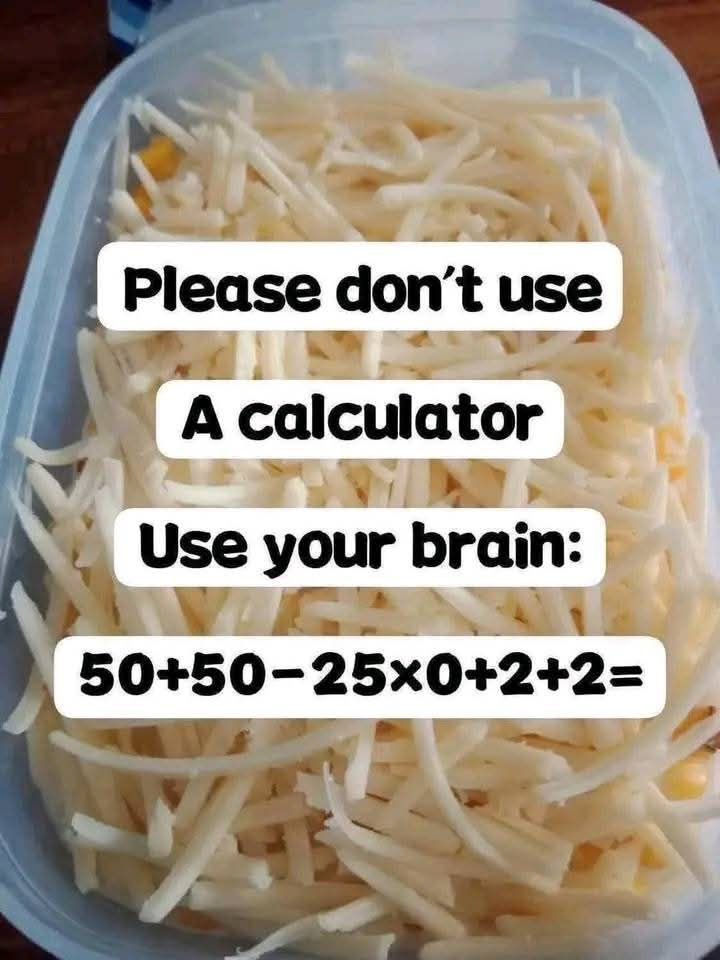Professional Article: “The Importance of Mental Math and the Order of Operations”
In an increasingly digital world, where calculators and smartphones are always within reach, the art of mental math remains an essential skill for daily life and cognitive development. A popular image circulating on social media challenges viewers with a seemingly simple equation:
50 + 50 – 25 × 0 + 2 + 2 = ?
At first glance, the equation might tempt some to reach for a calculator. However, solving it correctly requires nothing more than a basic understanding of arithmetic rules — specifically, the order of operations.
Understanding the Order of Operations
To maintain consistency and accuracy in mathematics, we follow a universal set of rules known as the order of operations, often remembered by the acronym PEMDAS:
-
Parentheses
-
Exponents (or Orders)
-
MD Multiplication and Division (from left to right)
-
AS Addition and Subtraction (from left to right)
In the example provided:
We begin with multiplication, as it takes precedence over addition and subtraction. The multiplication of 25 × 0 yields 0, simplifying the equation to:
The remaining operations are carried out from left to right, resulting in a final answer of 104.
Why Mental Math Matters
Practicing problems like these without a calculator strengthens numerical fluency, sharpens focus, and enhances problem-solving skills. It builds confidence in one’s ability to handle everyday situations — from budgeting and shopping to estimating time and measurements.
Additionally, mental math supports brain health. Research suggests that engaging in cognitive challenges helps maintain and even improve memory and reasoning capabilities over time.
Conclusion
While technology offers convenience, the foundational skills of arithmetic and logical reasoning remain as important as ever. Taking a moment to apply basic math principles — rather than relying solely on devices — can empower individuals, improve cognitive function, and deepen appreciation for the elegance of numbers. So the next time you see an equation like this, take the challenge — and trust your brain.

